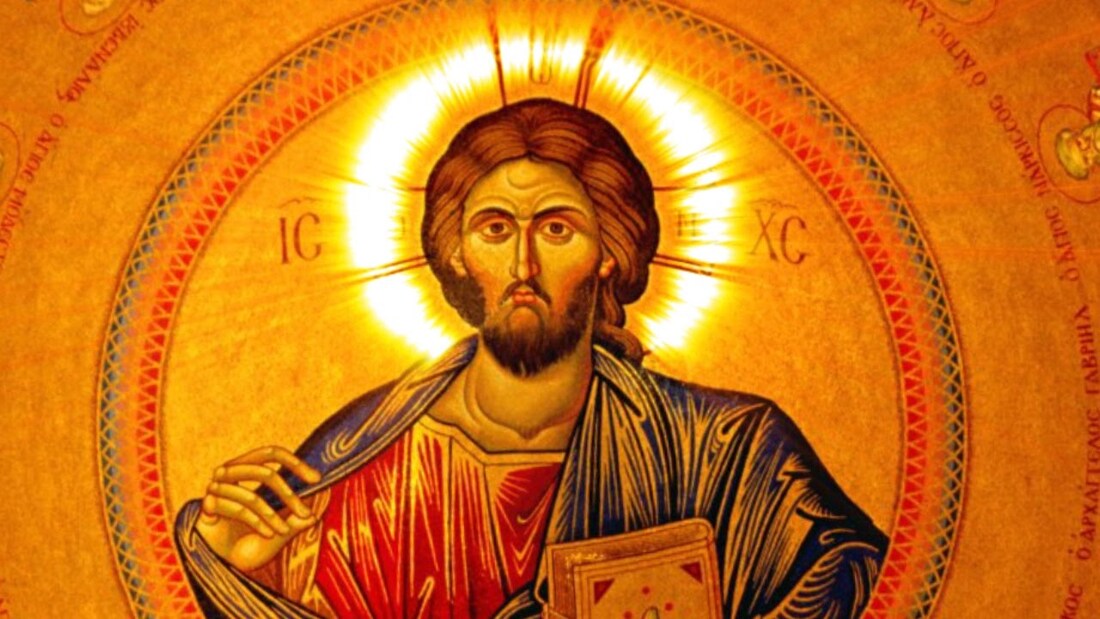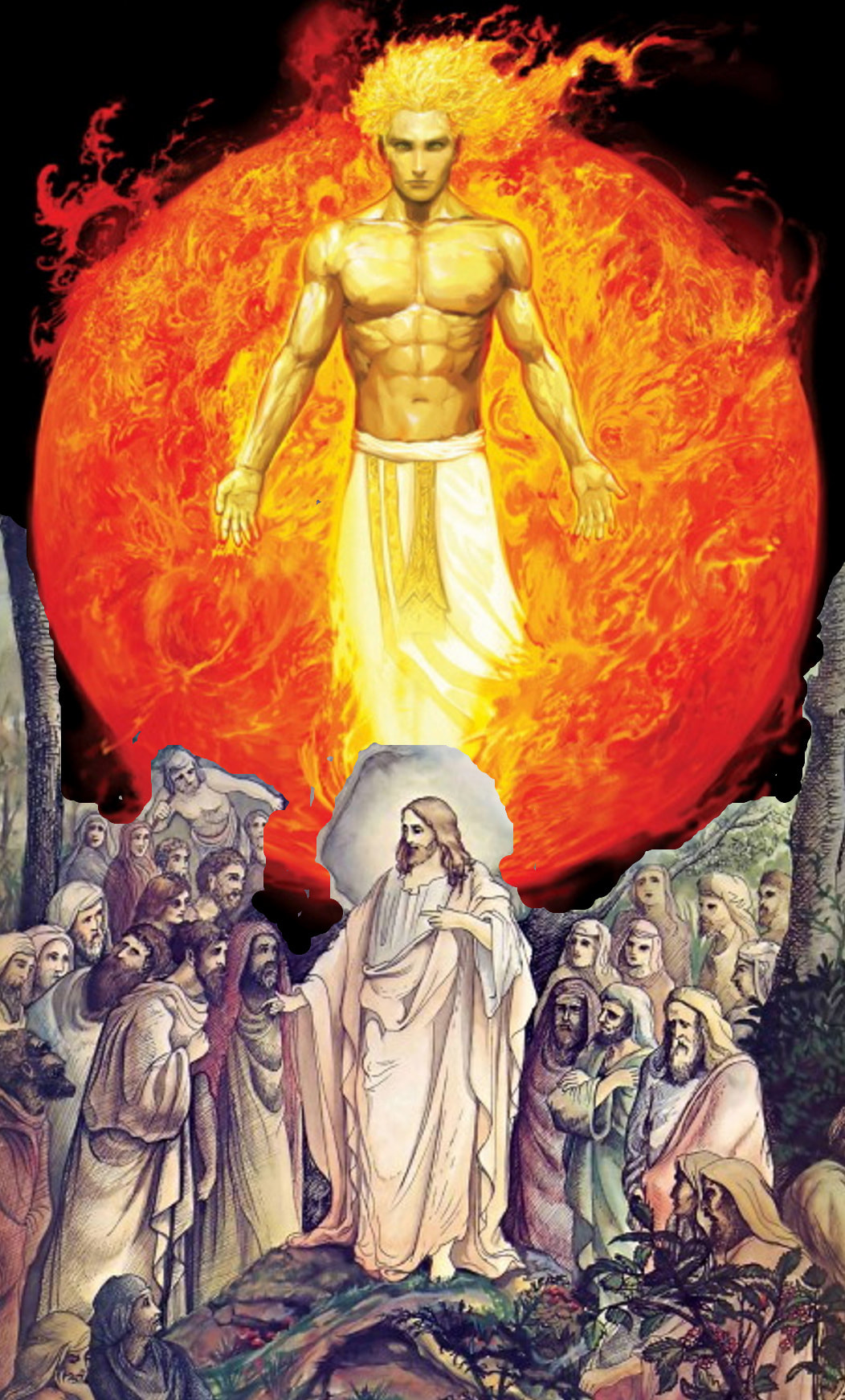|
Over the ages, the ancients did not simply observe the movements of the celestial bodies but personified them and created stories about them that were recreated upon the earth. Out of this polytheistic, astrological atmosphere came the “greatest story ever told,” as the gospel tale is, in fact, astro-theological and non-historical, recording the mythos found around the globe for eons. Thus, the Christian religion, created and shored up by forgery, fraud and force, is in reality astro-theological and its founder mythical, based on many thousands of years of observation by the ancients of the movements and interrelationships of the celestial bodies and the earth, one of the favorite of which was, understandably, the sun. The sun figured in the stories of virtually every culture worldwide. In many places and eras, the sun was considered the most visible proxy of the divine and the most potent bestower of Spirit. It was regarded as the first entity in “the Void” and the progenitor of all life and matter. The sun also represented the Archetypal Man, as human beings were perceived as “solar entities.” In addition to being a symbol of the spirit because it rises and sinks, the sun was the “soul of the world,” signifying immortality, as it is eternally resurrected after “dying” or setting. It was also considered the purifier of the soul, as noted. Hence, from at least the Egyptian age down to the Gnostic Christians, the sun, along with the moon and other celestial bodies, was viewed as a “guide” into the afterlife. We know that it is not pleasant for the eyes to behold the direct light of the sun; it is, however, pleasant for humanity to behold the sun as it rises in the morning, bringing light and life. Indeed, the sun itself is the “face of the divine” upon which it is impossible to look. Thus, the sun was very important to the ancients, so much so that around the world for millennia a wide variety of peoples have built solar temples, monuments and entire religions with priestesses and priests of the Sun, along with complex rituals and accoutrements. Within these religions is contained the ubiquitous mythos, a template or archetypical story that personifies the heavens and Earth, and rolls them into a drama about their interrelationship. Rather than being an entertaining but useless “fairytale,” as myths are erroneously considered to be, the mythos is designed to pass along from generation to generation information vital to life on Earth, so that humans do not have to learn it repeatedly but can progress. Without the knowledge, or gnosis, of the celestial mythos, humankind would still be in caves. The celestial mythos is complicated because the solar myth is intertwined with the lunar, stellar and terrestrial myths. In addition, some of the various celestial players were introduced later than others, and many of them took on new functions as the focus switched from stars to moon to sun to other planets, and back again. For example, Horus is not only the sun but also the North Pole star, and his twin brother-adversary, Set, represents not only darkness but also the South Pole star. Furthermore, as time progresses and the skies change, as with the precession of the equinoxes and the movements of the sun annually through the zodiac and daily through its “houses,” as well as with cataclysm, the attributes of the planetary bodies within the mythos also change. The Sun of God Within the Sun Book or Holy Bible was incorporated by such priest-craft the most consolidated version of the celestial mythos ever assembled, the story of the “son of God.”
Thus, the son of God is the sun of God. The solar mythos, in fact, explains why the narratives of the sons of God previously examined are so similar, with a god-man who is crucified and resurrected, who does miracles and has 12 disciples, etc.: To wit, these stories were in actuality based on the movements of the sun through the heavens. In other words, Jesus Christ and the others upon whom he is predicated are personifications of the sun, and the gospel fable is merely a repeat of a mythological formula revolving around the movements of the sun through the heavens. For example, many of the world’s crucified god-men have their traditional birthdays on December 25th (“Christmas”). This date is set because the ancients recognized that (from a geocentric perspective in the northern hemisphere) the sun makes an annual descent southward until after midnight of December 21st, the winter solstice, when it stops moving southerly for three days and then starts to move northward again. During this time, the ancients declared that “God’s sun” had “died” for three days and was “born again” after midnight of December 24th. Thus, these many different cultures celebrated with great joy the “sun of God’s” birthday on December 25th. The following are the main characteristics of the “sun of God”:
Visit this link for an extensive detailed overview of why the Son of God is actually the SUN of God.
0 Comments
Your comment will be posted after it is approved.
Leave a Reply. |
News Watch
Mind-opening news articles, editorials, videos & apparel that inspire our readers and help liberate them from the status quo. Stay informed.
Write For UsSpace WatchTop NewsNews Watch Categories
All
|
|
|
HAVE A TIP OR STORY TO TELL? JOIN TODAY & SHARE YOUR STORY!
If you have a breaking news tip or idea, please email: [email protected] Apparently Apparel® is a registered trade name and part of the ZOAT International® brands network. © 2007-2023. All Rights Reserved. Privacy Policy. All art & news content posted on this site is commentary or opinion and is protected under Free Speech. ApparentlyApparel.com is not responsible for content written by contributing artists, authors or news feeds. The information on this site is provided for educational and entertainment purposes only. It is not intended as a substitute for professional advice of any kind. ApparentlyApparel.com assumes no responsibility for the use or misuse of this material.
|
|








